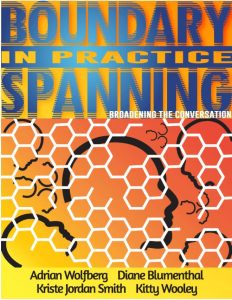![Strategy OS: Implement an Advanced Business Operating System in Six Simple Steps (Entrepreneur Tools Book 3) by [Steve Preda]](https://m.media-amazon.com/images/I/41QFBEJ7IWL.jpg)
Many managers who haven’t had access to the top layers of an organization imagine that strategic planning is either the product of a superior intellect and insight or, at the other extreme, some random musings and voodoo-assisted “visioning”. It’s true that a very small number of leaders have far more finely attuned antennae than the rest of us and are able to pick up on vibrations if not in the cosmos then at least in their industry that are not apparent to others until much later. Their success may look like magic at the time, although it can and will be explained long after the fact by dozens of consultants and academics. The vast majority of organizations are able to craft effective strategies with a structured process that applies known practices to the environmental signals that its leaders are able to identify.
This book provides the guide map to the generally-accepted practices that make up a useful strategic planning capability, and brings in several tools that aren’t seen as often. It would serve as a useful handbook for any executive or member of a planning team, and for the consultants seeking to advise them.
It’s not for every organization; many of the concepts require a relatively free rein in terms of markets and products, whereas many businesses, particularly the smaller ones (under, say, $20M annual revenue) wouldn’t be credible trying to reinvent their industry. Others, particularly in the public sector, may see themselves as too constrained by law and habit to make such shifts, but there is room to adopt the ideas behind the practices and find ways to make changes and improvements even within their sandboxes. In addition, it’s not really an “Operating System”; it stops at the point that most organizational strategies fail: the designation of strategic initiatives and allocation of specific responsibilities, resources and milestones to make sure that what shows up on paper in the strategic plan will eventually occur in real life.

![CorkScrew Solutions: How Great Leaders Solve Impossible Problems (Theory of Constraints Simplified) by [Clarke Ching]](https://m.media-amazon.com/images/I/41hZj5xZCpL.jpg) easy-to-read book is still somewhat esoteric. It is the first one I have found that explains how to use the “thinking clouds” method first presented by Eli Goldratt in his Critical Chain Thinking series. It provides an approach to clarifying the real issues when you are faced with choices to achieve two different, desirable but mutually-exclusive goals. In following Clarke Ching’s advice, you may be able to see alternative formulations of the problem, the pros and cons, or the objectives as you seek to reconcile your dilemma.
easy-to-read book is still somewhat esoteric. It is the first one I have found that explains how to use the “thinking clouds” method first presented by Eli Goldratt in his Critical Chain Thinking series. It provides an approach to clarifying the real issues when you are faced with choices to achieve two different, desirable but mutually-exclusive goals. In following Clarke Ching’s advice, you may be able to see alternative formulations of the problem, the pros and cons, or the objectives as you seek to reconcile your dilemma.![Here's The Deal: Everything You Wish a Lawyer Would Tell You About Buying a Small Business by [Joel Ankney]](https://m.media-amazon.com/images/I/41l6+OnAAWL.jpg)

 This book is an introduction to Kitty Wooley’s “Senior Fellows” initiative to develop and maintain an ongoing network of public servants (loosely defined) who are willing and able to work across organizational and functional lines to improve both public services and the conditions under which they are provided.
This book is an introduction to Kitty Wooley’s “Senior Fellows” initiative to develop and maintain an ongoing network of public servants (loosely defined) who are willing and able to work across organizational and functional lines to improve both public services and the conditions under which they are provided.![The Phoenix Project: A Novel about IT, DevOps, and Helping Your Business Win by [Kim, Gene, Behr, Kevin, Spafford, George]](https://images-na.ssl-images-amazon.com/images/I/51zDZ1s4hCL.jpg)
![Pink Goldfish: Defy Normal, Exploit Imperfection and Captivate Your Customers by [Phelps, Stan, Rendall, David]](https://images-na.ssl-images-amazon.com/images/I/51IG1Lg%2BIKL.jpg) A very easy reading book, packed with real-company examples to prove the points around the idea that you do much better by being very good at what you’re good at than by trying to copy what the most venerated institution is able to afford to do (but usually doesn’t). For a small entity there are plenty enough potential customers to thrive by being great at your core offering and by turning less-effective elements into points of differentiation.
A very easy reading book, packed with real-company examples to prove the points around the idea that you do much better by being very good at what you’re good at than by trying to copy what the most venerated institution is able to afford to do (but usually doesn’t). For a small entity there are plenty enough potential customers to thrive by being great at your core offering and by turning less-effective elements into points of differentiation.